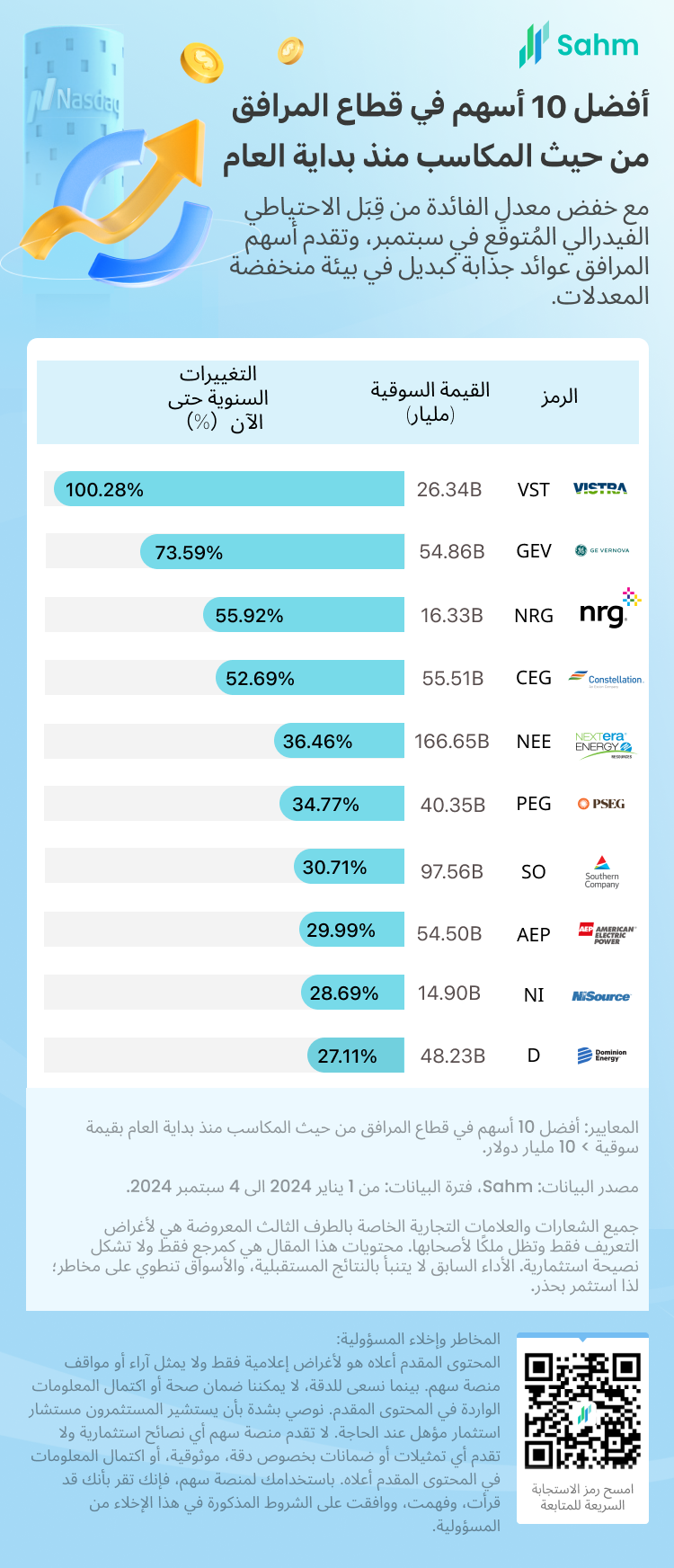In One Chart | Looming Rate Cuts: Capturing US Utilities Stock Opportunities
Vistra Energy Corp. VST | 170.51 | +5.17% |
GE Vernova Inc. Common Stock GEV | 382.26 | +4.21% |
NRG Energy, Inc. NRG | 99.79 | +2.66% |
Constellation Energy Group Inc. CEG | 288.87 | +3.45% |
Public Service Enterprise Group Incorporated PEG | 85.06 | +1.13% |
As the Federal Reserve seems to have tamed inflation and a rate cut in September appears "inevitable," the market is finally breathing a sigh of relief.
Previously, we compiled the performance of various asset classes in a macro environment characterized by rate cuts, identifying opportunities in pharmaceutical stocks and consumer staples. In addition, the utilities sector emerges as another beneficiary.
This year, the utilities sector has quietly become one of the hottest sectors in the U.S. stock market.

Within the utilities sector, leading American power conglomerate Vistra Energy ( Vistra Energy Corp.(VST.US) ), wind power giant GE Vernova LLC ( GE Vernova Inc. Common Stock(GEV.US) ), and energy heavyweight NRG Energy ( NRG Energy, Inc.(NRG.US) ) have been top performers, with respective gains of 100.28%, 73.59%, and 55.92%. Notably, these companies are also beneficiaries of AI, as tech giants' rapid construction of AI data centers drives up power demand.
Moreover, major U.S. carbon-free nuclear power producer Constellation Energy ( Constellation Energy Group Inc.(CEG.US) ), utility power and natural gas company Public Service Enterprise Group ( Public Service Enterprise Group Incorporated(PEG.US) ), renewable energy pioneer NextEra Energy ( NextEra Energy, Inc.(NEE.US) ), one of the largest natural gas distributors NiSource Inc. ( NiSource Inc.(NI.US) ), the fourth-largest U.S. power producer Southern Company ( Southern Company(SO.US) ), utility giant American Electric Power ( American Electric Power Company, Inc.(AEP.US) ), and energy titan Dominion Energy ( Dominion Resources, Inc.(D.US) ) have all seen year-to-date gains between 27% and 52%.
In addition to utility stocks, numerous utility-related ETFs also warrant investor attention. Some noteworthy ETFs include Utilities Select Sector SPDR ETF ( Spdr Select Sector Fund - Utilities(XLU.US) ), Global X U.S. Infrastructure Development ETF ( Global X U.S. Infrastructure Development ETF(PAVE.US) ), Vanguard Utilities ETF ( Vanguard World Fds Vanguard Utilities ETF(VPU.US) ), iShares Global Infrastructure ETF ( S&P Global Infrastructure Index Ishares(IGF.US) ), and iShares U.S. Infrastructure ETF ( iShares U.S. Infrastructure ETF(IFRA.US) ). These ETFs have also shown impressive gains this year, with cumulative increases ranging from 9% to 23%.
Why are utility stocks attractive at the current juncture?
Firstly, the macro environment. U.S. Treasury yields are likely to decline over the next year. Utility stocks typically perform well in a declining interest rate environment and during economic downturns.
The utilities sector comprises companies providing essential infrastructure services, including electricity, natural gas, water, and other related services. Given their stable and defensive business models, utilities often exhibit relative stability during market volatility and are thus considered a safe-haven sector.
Secondly, during periods of falling interest rates, income-seeking investors often shift to utilities due to their high and stable dividend yields.
As yields on fixed-income securities (such as bonds) decline with lower interest rates, the stable cash flows and high dividend yields of utilities become attractive to investors seeking steady returns and long-term income.
This year, the utilities sector's earnings growth is expected to be at least 6%, with a yield of 3.6%, which is competitive compared to prevailing interest rates. In a rate-cutting cycle, utility companies' dividends are likely to continue increasing.
Thirdly, utilities are capital-intensive businesses typically financing their infrastructure investments through capital raising.
In a declining interest rate environment, lower borrowing costs and increased stock valuations make it easier for utilities to finance their operations and expansion projects. Reduced capital costs boost their profit margins and enable them to invest in more growth opportunities.
Fourthly, current attractive valuations suggest the potential for valuation recovery following a decline in 2023.
Goldman Sachs previously noted that despite substantial gains in the utilities sector this year, valuations remain reasonable, describing utilities as a "balanced choice for offense and defense." According to Goldman, the current price-to-earnings premium of utility stocks is only 6%, roughly in line with the historical average compared to the equal-weighted S&P 500 Index.
Fifthly, the surge in electricity demand driven by the AI boom provides growth momentum for utilities.
The rapid development of AI technology, which significantly increases electricity demand, also supports growth for U.S. utility stocks.
Crucially, compared to expensive tech giants such as Nvidia ( NVIDIA Corporation(NVDA.US) ), Microsoft ( Microsoft Corporation(MSFT.US) ), and Google, investors now have the opportunity to enter the utility sector at a relatively low cost, thereby participating in the AI revolution. This presents new opportunities for value-seeking investors.
In conclusion, amidst the current rate-cutting cycle in the U.S. stock market, positioning in utility stocks appears to be a wise choice.




